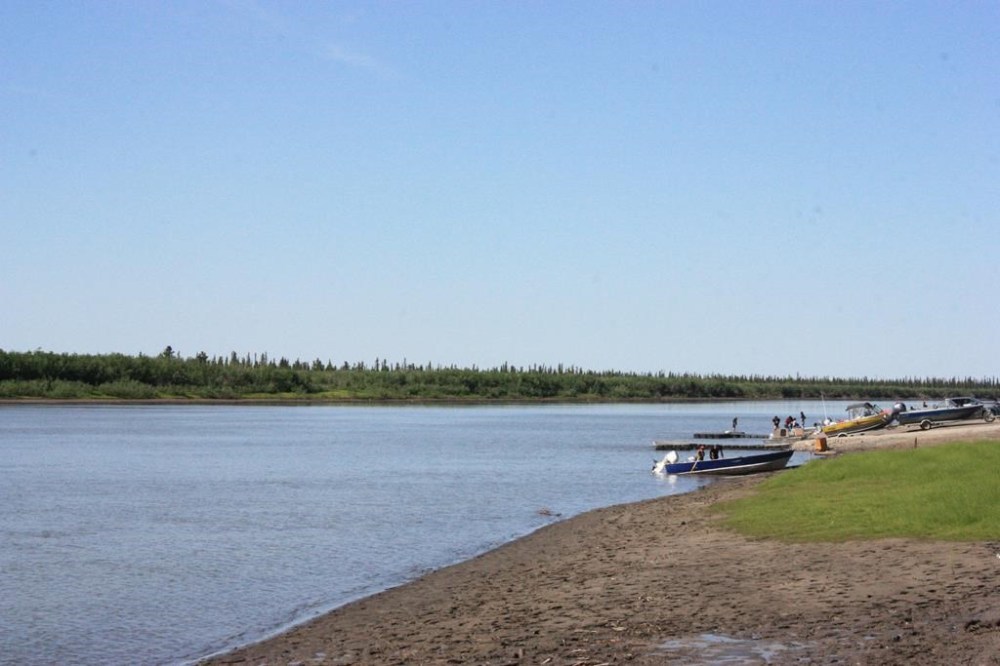N.W.T. communities shatter temperature records as heat warnings continue
Advertisement
Read this article for free:
or
Already have an account? Log in here »
To continue reading, please subscribe:
Monthly Digital Subscription
$1 per week for 24 weeks*
- Enjoy unlimited reading on winnipegfreepress.com
- Read the E-Edition, our digital replica newspaper
- Access News Break, our award-winning app
- Play interactive puzzles
*Billed as $4.00 plus GST every four weeks. After 24 weeks, price increases to the regular rate of $19.00 plus GST every four weeks. Offer available to new and qualified returning subscribers only. Cancel any time.
Monthly Digital Subscription
$4.75/week*
- Enjoy unlimited reading on winnipegfreepress.com
- Read the E-Edition, our digital replica newspaper
- Access News Break, our award-winning app
- Play interactive puzzles
*Billed as $19 plus GST every four weeks. Cancel any time.
To continue reading, please subscribe:
Add Free Press access to your Brandon Sun subscription for only an additional
$1 for the first 4 weeks*
*Your next subscription payment will increase by $1.00 and you will be charged $16.99 plus GST for four weeks. After four weeks, your payment will increase to $23.99 plus GST every four weeks.
Read unlimited articles for free today:
or
Already have an account? Log in here »
Hey there, time traveller!
This article was published 12/07/2023 (826 days ago), so information in it may no longer be current.
YELLOWKNIFE – Several communities in the Northwest Territories have broken temperature records in recent days as residents try to beat the heat.
Jesse Wagar, a meteorologist with Environment and Climate Change Canada, says Norman Wells and Fort Good Hope set new all-time maximum temperature records.
That means they experienced their hottest temperature ever recorded, regardless of the day.

Thermometers reached almost 37.9 C in Norman Wells and 37.4 C in Fort Good Hope on July 8.
The last record of 35 C was set in 1989 in Norman Wells and 1920 in Fort Good Hope.
Wagar says Inuvik also broke its all-time daily maximum temperature on July 4, when it was 33 C.
The western Arctic community last set the record at 32.8 C in 2001.
On July 4 and 8, Deline, Fort Liard and Nahanni Butte experienced their hottest temperatures on record for those particular days while Paulatuk and Wrigley also broke the daily record for July 8.
In Yukon, Carmacks set an all-time daily maximum temperature record on July 7 at 35.5 C, just breaking the previous record of 35.3 C from 2004.
“We’ve just been stuck under a pretty sharp ridge of high pressure really over the last several months,” Wagar said. “It’s been allowing the temperatures at the surface to really, really build up.”
Wagar said in May and June the territories also saw several daily temperature records broken.
She said the new temperature record in Carmacks is the third-hottest daytime temperature ever recorded in Yukon while the new records in Norman Wells and Fort Good Hope place fourth and fifth on the Northwest Territories’ list.
Of the hottest daytime temperatures ever recorded in the Northwest Territories, Wagar said four of the top five have been set in the last eight years with three in the past three summers.
“These high temperatures that we’re seeing here, they are concerning,” she said. “The trend is there. We’re seeing hotter and hotter temperatures year over year and I wouldn’t be surprised if we see more this year or next year just with how quickly the Arctic is warming overall.”
Heat warnings remain in place for the Northwest Territories communities of Fort Good Hope, Fort Providence, Kakisa, Fort Simpson, Jean Marie River, Norman Wells, Tulita and Wrigley. Hot weather in those communities is expected to reach daytime temperatures around 30 C this week.
Air quality advisories have also been issued for several communities across the territory due to wildfire smoke.
The Northwest Territories wildfire agency said on Wednesday 78 wildfires were actively burning across the territory. A total of 98 fires have burned nearly 7,177 square kilometres in the territory this year so far.
This report by The Canadian Press was first published July 12, 2023.


